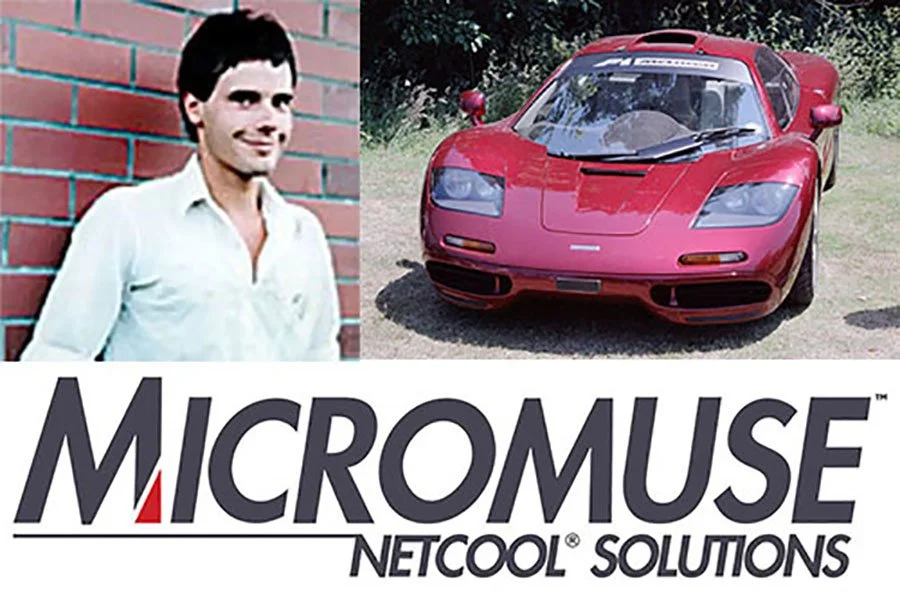Bio: Schlumpf Brothers
/Over the course of three decades, Swiss brothers Fritz and Hans Schlumpf accumulated the best high end automobile collection on the planet.
The Schlumpfs were big Bugatti fans and, for a time, they dominated the world market for the prestigious French marque. Other fine European brands were prolifically acquired too and, by the mid 1970s, the highly secretive Schlumpfs had amassed an unparalleled hoard.
However, almost their entire inventory was later confiscated in a controversial move by the French government.
Fritz (born 1906) and Hans (born 1904) rose from relatively humble beginnings to earn a fortune in the textile industry.
Their father was Swiss textile industrialist, Carl Schlumpf. Their mother, Jeanne Becker, who the pair particularly revered, was French. She hailed from Mulhouse in the Alsace region of eastern France close to the German-Swiss border.
The brothers spent their formative years being schooled in Mulhouse where the family owned a country home. Fritz subsequently became a salesman and Hans started out as a banker.
In the years before World War 2, Fritz Schlumpf purchased a Bugatti Type 35B that he enthusiastically raced. It also established his love affair with the marque.
Around the same time, the brothers started to take more of an interest in the textile industry.
They began to purchase shares in a substantial Malmerspach wool spinning mill. Through accumulation of stock they entered the board of directors and then became the directors.
This approach was repeated with other mills throughout Alsace, the Rhine and Northern France. Each mill was suitably redeveloped and earned the Schlumpfs a considerable return on their investment.
In early 1957, Fritz’s mother requested he give up racing. It was the trigger that saw the Schlumpfs move heavily into collecting.
That July, the brothers purchased a Mulhouse wool mill, part of which they used to house their collection. They also had an adjacent building converted into a restoration workshop where ten mechanics were employed.
The restoration workforce later grew to nearly 40 personnel, all of whom had to sign a confidentiality agreement not to disclose their work or the scale of the collection.
At the time, most old cars were little appreciated and this was reflected in their market values.
By the middle of 1960, the brothers had accumulated over 40 fine automobiles.
1963 proved to be a pivotal year. The Schlumpfs purchased the 30-strong Bugatti collection of John Shakespeare in the USA that included a Type 41 Royale. The price was $85,000.
The brothers also acquired the assets of the bankrupt Bugatti factory that had been purchased by Hispano-Suiza who were desperate for money. This 18-car collection included Ettore Bugatti’s personal Royale plus a mass of spare parts and technical drawings.
All these cars and parts were secretly stored in the converted Mulhouse mill.
By the mid 1970s, the Schlumps had nearly 600 cars in their possession including 151 Bugattis.
Fritz decided to display the collection and quietly converted the Mulhouse factory into a lavish museum that would be the flagship of the Schlumpf Group.
In 1976, everything was ready and the former mill had been luxuriously decorated. The main floor was lit by 845 lampposts identical to those used on the Pont Alexandre 3 bridge in Paris.
However, the European textile industry was in crisis as production switched to Asia.
That same year, the brothers were forced to lay off thousands of workers and declare bankruptcy.
The museum opening was put on hold but, in March 1977, trade unions discovered the secret collection during a protest.
Almost 2000 ex-workers occupied the Mulhouse premises and the brothers were held in their nearby Malmerspach villa. After three days, at the French authorities instigation, the Schlumpfs were taken to the Swiss border in Basel where they officially took up residence. They spent the rest of their days as permanent guests in the Drei Koenige Hotel.
In France, the brothers were accused of having misused their business to finance their hobby and, for two years, the museum was run as a workers benefit.
By 1978, the museum had attracted 800,000 visitors and most of the cars had been placed on the historical register of French artefacts.
In 1979, the scale of the Schlumpf’s debt became clear and various creditors eyed the car collection as a means to recover their losses. A bankruptcy liquidator ordered the museum be closed.
The French authorities could see the opportunities the collection held for Mulhouse and the Alsace region so, in 1981, the cars, buildings and land were sold to the French state for FFr44m.
On July 10th 1982, the Cite de l’Automobile museum officially opened its doors.
The Schlumpf name was reintroduced in 1988 and, in 1997, the museum was remodelled.
A protracted court battle saw the late Fritz Schlumpf’s widow, Arlette, awarded the balance of a FFr40m indemnity in 1999. She also received the 62-car reserve collection.
Today, the fabulous collection accumulated by Fritz and Hans Schlumpf is fully on display and remains perhaps the finest single assortment of 20th century motor cars in existence.
Text copyright: Supercar Nostalgia
Photo copyright: Cite de l’Automobile - https://www.citedelautomobile.com/
























